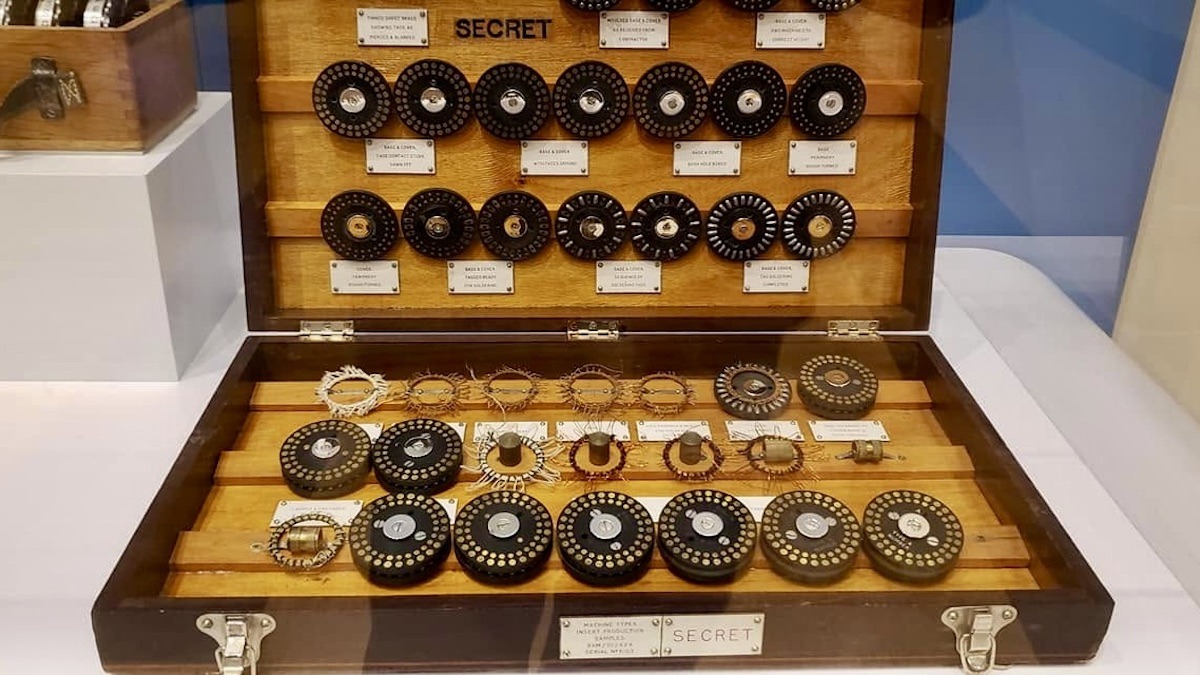
A full set of Enigma rotors, showcasing the sophisticated mechanics behind WWII's most famous cipher.
The Mechanical Brain: Rotor System of the Historic Enigma Cipher
Beyond the familiar keyboard of an Enigma Machine lies its true genius: a remarkable collection of interchangeable rotors. This photograph offers a rare glimpse into the very core of this legendary cipher device, revealing the array of components that allowed it to scramble messages with such staggering complexity for its time. Each of these rotors is essentially a wired wheel, designed to produce a different electrical pathway, and when arranged in various combinations, they created an astronomical number of possible encryption settings.
It was this mechanical dance of the rotors, advancing with each keystroke, that made the Enigma’s codes so difficult to crack during World War II. The ability to swap out and reorder these rotors, coupled with a plugboard, multiplied the security exponentially, turning plain text into seemingly random gibberish. The battle to understand and replicate these internal pathways was where the real intellectual war was fought, culminating in the groundbreaking work of cryptanalysts who eventually turned the Enigma’s strength into its vulnerability. This visual reminds us that behind every complex system, there’s often an elegantly designed mechanism holding the key to its function.
It’s interesting to consider how the principles behind cracking the Enigma resonate with today’s advancements in Artificial Intelligence. The quest to find patterns in vast amounts of complex data, to build systems that can learn and adapt to seemingly random inputs, and to decipher underlying logic from massive datasets — these are core challenges in both cryptography and modern AI development. From deciphering secure communications to training large language models, the echoes of Bletchley Park’s analytical breakthroughs continue to influence the cutting edge of computational intelligence. This powerful artifact speaks volumes without making a sound, yet its legacy continues to shape our digital world.



